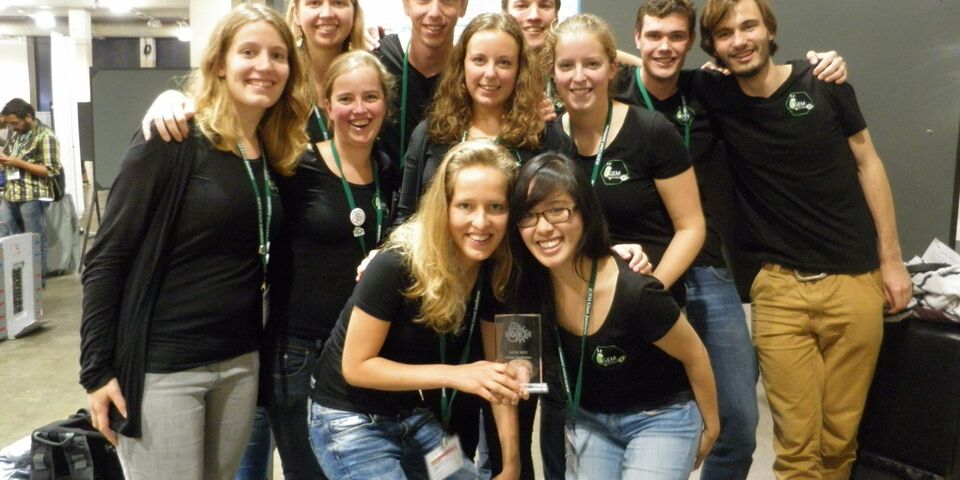TU/e team wins Best Innovation in Measurement iGEM
Yesterday, TU/e’s iGEM team has won the Best Innovation in Measurement Special Prize at the Giant Jamboree in Boston, US. The Eindhoven student team beat some two hundred undergraduate teams. It was also nominated in the categories Best New Application and Best Education & Public Engagement. The team developed a biosensor based on proteins, which they inserted into the E. coli bacterium.
The Eindhoven iGEM project, Clickable Outer Membrane Biosensors, elaborates on the successful project of last year’s team. The basis of the biosensor is created by the specific proteins that are inserted into the outer membrane – the skin – of the E. coli bacterium. These proteins enable all kinds of molecules to be attached to them depending on what they should be used for. Last year’s team wanted to use the proteins to protect the bacterium from external influences, but this year’s team decided to attach so-called aptamers (pieces of DNA) to the bacterium. Team member Kwankwan Zhu: “They’re feelers of sorts, and they can be used to detect certain chemicals.”
One example of a chemical the biosensor can detect is a Q fever antibody. How it works: luminous proteins are attached to the inside of the cell. As soon as the aptamers bind to the antibodies, the proteins light up or change color. It’s an easy way to determine whether the goat in question is still Q-fever resistant, or if it should be vaccinated again.
Although the students didn’t manage to develop a working sensor, they have been able to prove that they incorporated essential elements into the bacterium, including the aptamers and luminous proteins. “That’s quite the achievement in itself”, says Professor Maarten Merkx, who accompanied the team to Boston as their supervisor. “They’ve conducted actual scientific research, and it’s very rare an iGEM team realizes their goal anyway.”


Discussion